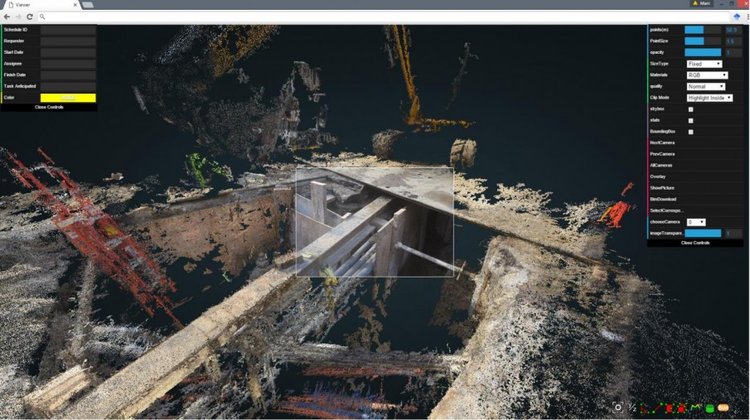

More tangible dividends are rising to the surface now at Chicago’s UI LABS, a public-private innovation accelerator that launched with great fanfare in late 2014. But after the headline-grabbing entity broke ground on a $300-million, 94,000-sq-ft, Digital Manufacturing and Design Innovation Institute (DMDII) on downtown Goose Island, the nonprofit incubator then retreated from the front pages.
Last week, however, City Digital — a UI LABS startup originally named CityWorks — announced that it had developed the foundational technology components for a new underground infrastructure mapping (UIM) platform that aims to capture visually below-ground assets to reduce time and cost for urban construction projects and utility management. “The platform will generate, organize, visualize, and store 3D underground infrastructure data, potentially saving municipalities and utilities millions of dollars in construction and planning processes,” said the City Digital release, unveiling the UIM pilot program.
“an underground utility line is accidentally struck, on average, every 60 seconds in the U.S., as a result of inaccurate or obsolete data on below-ground assets”
“By improving the accuracy of underground infrastructure information, the platform will prevent inefficient and delayed construction projects, accidents, and interruptions of services to citizens,” added Brenna Berman, City of Chicago CIO. Collectively, the city and fellow pilot team partners Accenture, Microsoft, ComEd, ESRI (GIS mapping specialists), HBK Engineering, have developed advanced scanning tools; a data capture system; mobile applications for use by construction and utility workers to capture data and update the system in real time; a data visualization application; and business model templates for cities to collect revenue.
According to the American Public Works Association (APWA), an underground utility line is accidentally struck, on average, every 60 seconds in the U.S., as a result of inaccurate or obsolete data on below-ground assets. State governments have estimated the potential to unlock $21 in value for every $1 invested in underground asset management by reducing accidents, damages, and delays, says APWA.
“The UIM pilot is a tangible demonstration of how taking a central role in the digital ecosystem can help deliver innovation through IoT,” said Jay Hedley, managing director and ‘connected spaces lead’ at Accenture Mobility, a unit of Accenture Digital. “Smart cities are about improving services and redesigning citizenship by providing better, seamless experiences. Connecting the physical equipment underground with this digital solution will help citizens by increasing the efficiency of both planning and delivery of infrastructure projects.”
“Connecting the physical equipment underground with this digital solution will help citizens by increasing the efficiency of both planning and delivery of infrastructure projects”
Using the City of Chicago as a test bed for the platform’s development, the pilot team is deploying the new technology to create an accurate 3D map of underground assets, such as water pipes, fiber optic lines, gas pipes, electrical lines, and legacy infrastructure located in city streets and alleys. An engineering-grade, cloud-based data platform enables this critical data to be securely stored and shared among the city and multiple utilities.
The UIM pilot’s technology and processes are the fruit of a broad consortium of government, industry, and academic partners at City Digital. The group also includes ‘big data’ cruncher Cityzenith, and not surprisingly, the University of Illinois at Urbana-Champaign, one of UI LABS founding partners.
This next phase of the multi-year UIM pilot program is already under way. Future phases will seek to make the infrastructure work even smarter in the field by incorporating underground sensors, as that technology becomes cheaper and more scalable. Related collaborations with the separate, urban sensor-heavy Array of Things (AoT) pilot program, also ongoing in Chicago, would seem highly likely.
Yes, it would seem, the former “hog butcher to the world” is now truly a digital city, indeed.

Discussion
Be the first to leave a comment.
You must be a member of the BuiltWorlds community to join the discussion.